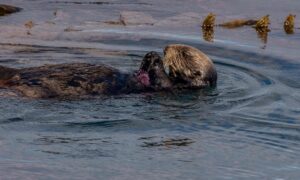
Some ocean species and habitats struggle to recover on their own and need help. Take sea otters, which were virtually eliminated by the end of the 19th century by commercial hunting for their super-dense pelts.
From the 1960s to 1990, some sea otters were moved to repopulate places where they had once lived. Today there are about 150,000 sea otters in the wild and a third of them are descended from translocated otters.
The US Fish and Wildlife Service is now considering moving more otters to fill in the gaps, including along the coast north of San Francisco. The motivation for this is partly because otters can help keep entire ecosystems healthy.
Without otters to keep their numbers down, sea urchin populations explode and kelp forests become grazed down to the seabed. When otters returned to Alaska and British Columbia, so did the kelp forests.
Efforts are also under way to save the otters’ fellow predators. Sunflower sea stars are colourful starfish the size of bicycle wheels and also have a big appetite for sea urchins. But in 2013, a devastating disease struck the sunflower sea stars, turning them into piles of goo, and their populations collapsed.
A few of the remaining healthy sunflower sea stars were moved into laboratories at the University of Washington, where researchers worked out how to breed them in aquariums. If the sea stars do not recover by themselves in the wild, there is now at least a possibility of reintroducing the species from captivity.
